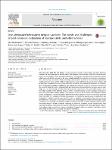Live-attenuated tetravalent dengue vaccines: The needs and challenges of post-licensure evaluation of vaccine safety and effectiveness
Wichmann, Ole
Vannice, Kirsten
Asturias, Edwin J.
Luna, Expedito José de Albuquerque
Longini, Ira
Lopez, Anna Lena
Smith, Peter G.
Tissera, Hasitha
Yoon, In-Kyu
Hombach, Joachim
Since December 2015, the first dengue vaccine has been licensed in several Asian and Latin American countries for protection against disease from all four dengue virus serotypes. While the vaccine demonstrated an overall good safety and efficacy profile in clinical trials, some key research questions remain which make risk-benefit-assessment for some populations difficult. As for any new vaccine, several questions, such as very rare adverse events following immunization, duration of vaccine-induced protection and effectiveness when used in public health programs, will be addressed by post-licensure studies and by data from national surveillance systems after the vaccine has been introduced. However, the complexity of dengue epidemiology, pathogenesis and population immunity, as well as some characteristics of the currently licensed vaccine, and potentially also future, live-attenuated dengue vaccines, poses a challenge for evaluation through existing monitoring systems, especially in low and middle-income countries. Most notable are the different efficacies of the currently licensed vaccine by dengue serostatus at time of first vaccination and by dengue virus serotype, as well as the increased risk of dengue hospitalization among young vaccinated children observed three years after the start of vaccination in one of the trials. Currently, it is unknown if the last phenomenon is restricted to younger ages or could affect also seronegative individuals aged 9 years and older, who are included in the group for whom the vaccine has been licensed. In this paper, we summarize scientific and methodological considerations for public health surveillance and targeted post-licensure studies to address some key research questions related to live-attenuated dengue vaccines. Countries intending to introduce a dengue vaccine should assess their capacities to monitor and evaluate the vaccine’s effectiveness and safety and, where appropriate and possible, enhance their surveillance systems accordingly. Targeted studies are needed, especially to better understand the effects of vaccinating seronegative individuals.
Notes
‘European Union (EU)’ and ‘Horizon 2020’
No license information

